How To Put Faith in Design
Anglerfish are famous for the glowing lure they dangle from their heads that they use to catch small fish. But this is not the most interesting thing about them. Their most fascinating trait is how they mate. Males of the species, who are much smaller, lack a functioning digestive system. To survive they must combine, or fuse-mate, with the females. This means they bite into the female’s skin, releasing an enzyme that bonds them together for life. In exchange for the nutrients they need to live, they provide her with sperm. If this sounds desperate that’s because it is: only 1% of males live long enough to find a mate.
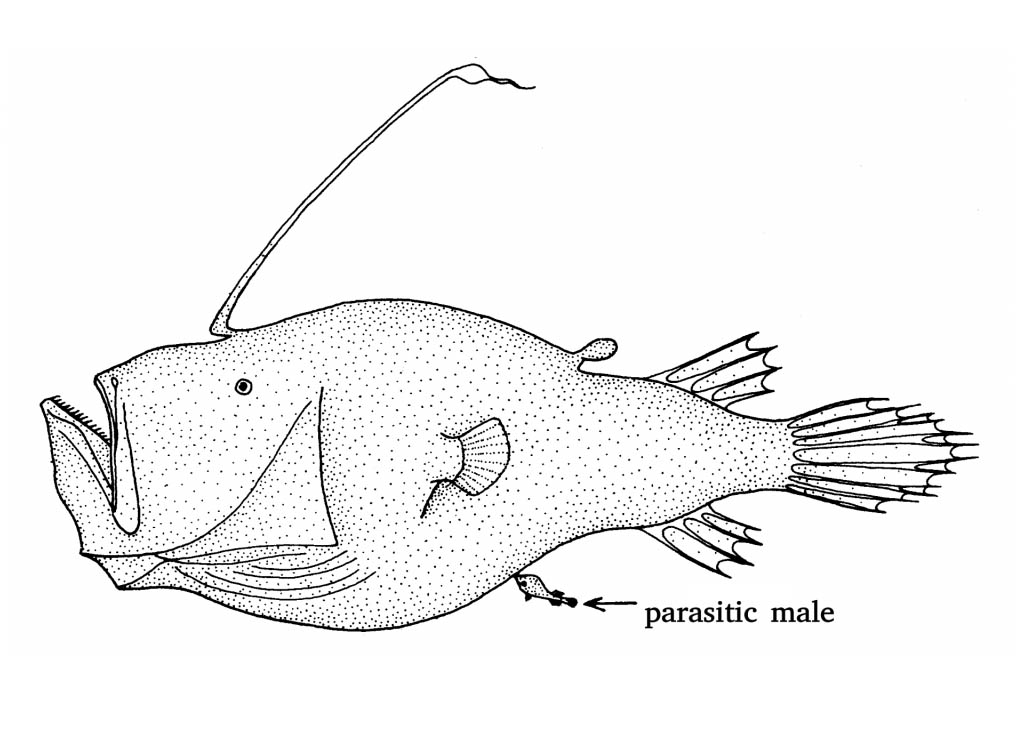
If the equivalent of the shiny lure atop the anglerfish were part of a tech product, deceiving people into making bad choices, we’d call it a dark pattern: a deliberate deception that causes harm to one party but benefits the other. But we don’t use this label to apply to nature because… well I’m not sure why. Evolution is about good design for survival and we can learn from its history, even if we don’t agree with its morality. But the history of design most UX designers know starts with the Macintosh. We have a narrow view of how design fits into the world, even into the world of business, and that works against us.
Corporations, like anglerfish and other living things, are designed to survive. They evolve and use tactics that manipulate perception. Consider how the tail of a male peacock is a kind of advertising. Or how that ultraviolet light in orchid petals, crafted to attract insects for fertilization, is part of its “plant marketing strategy.” There’s perhaps nothing wrong with trying to get others interested in what you have to offer. It seems fair and natural, doesn’t it?
Yet there is also the Cuckoo bird. It lays an egg in other bird species’ nests without the mother knowing. When the young cuckoo hatches, it pushes its unhatched step-siblings out of the nest to fall to their death. It’s a killer baby bird! We’d call this immoral, or homicidal, if humans did it, but we struggle to rationalize our morality with the natural world we’ve evolved from and are still a part of.
Founders, as a kind of creature to stay with the metaphor, don’t start companies to “make great user experiences.” Instead their goals, as explained to investors, are to generate profits, growth and value for shareholders. How society, the environment, customers and employees fare is often secondary. They may make things that improve our quality of life, but they are not generally altruistic. They hire people to help with their stated goals, and not for any other reason.
Remember that we had to shame automobile companies for years to put in seat belts. We had to fight for decades to get the makers of cigarettes to admit they were unhealthy. These were among the most profitable industries of their eras, and Big Tech has parallels to Big Auto and Big Tobacco. We might want a better designed world for everyone, but the literal design of corporations, the nature of their species so to speak, makes them creatures with more selfish ambitions.
In Mark Hurst’s recent essay, Why I’m losing faith In UX, he explains how he sees a decline in the last 30 years of User Experience design. He calls out how Amazon Prime’s cancellation process is now 6 pages long. And how leaders of Facebook, Google, Amazon, and Apple have lied under oath about the harm of their products. He calls out how ” design thinking” as popularized by Stanford’s d.school has empowered Silicon Valley to exploit people. He offers that in Big Tech the meaning of UX has changed from user experience to user exploitation. There’s merit to what Hurst is saying, but he’s missing the larger picture of the animal he is grappling with.
Hurst references Erika Hall’s popular tweet that offers a diagram (shown below) about the relationship: “This is all too often how UX design is considered and practiced.” I think she’s saying that while some designers do good work on the (small) things they control, they contribute to a negative net impact on the people they are designing for, given the dubious ethics of the underlying business that pays them (actually the meme implies customers will be eaten alive! But smarter predatory businesses want you to be a zombie, who buys things in ads and has good cash flow).

This should not be a surprise. We know that often the user is the product, but many of us have absorbed that cynically into the equation of UX work. Sometimes it’s confusing though. Hurst doesn’t mention that you can have a great user experience in one sense and be exploited, or exploit others, at the same time (e.g. Uber, Facebook or even cocaine, at least at first). Maybe we shrug now and then, saying “I’m just the designer” and it’s not our jobs to define the business or defend its ethics. Or that working for a questionable company, given our personal situation, is the only option that we have (like the lonely male anglerfish). For many reasons it’s easy to feel like we’re attached to a larger creature, hanging on, along for the ride.
One mistake we make is thinking this is specifically about UX. It’s not. Advertising, marketing, branding and even engineering are more likely to be the lure, as entire apps and services can be the free temptation hovering above a darker business model. It’s far more a diagram about predatory businesses than anything else.
Somewhere in Hurst’s story, and in the design community, was the latent hope that UX was going to reform capitalism. Or be immune from it. That sounds ridiculous, but there is no other explanation for our surprised outrage that these businesses do what they have always done, but now use UX as part of their tactics. As if we are so special and our knowledge beyond appropriation.
I don’t think Hurst’s lost faith is actually in UX. User Experience design is primarily a set of skills. You can’t lose faith in UX design any more than you can lose faith in carpentry. Instead he has lost his faith in the willingness of predatory (big tech) corporations to do the right thing. Placing faith there was the mistake, given what we know of the species. To believe most corporations, given their history, would, without regulations and against the wishes of their stockholders, invest in good design and ethical practices above other considerations is about as foolish as hoping anglerfish will go vegetarian. Even the billionaires who choose to do good do their philanthropy through foundations, not corporations.
This is depressing and I’m sorry. It’s not entirely your fault that we’re in this situation. Design culture has always been self-aggrandizing. Something rarely mentioned in design schools or books is the possibility that good design may have little impact on why some businesses succeed or not. There is a reason why Norman doors, for all of their usability flaws, are still popular in the world. We laugh at them, and countless other obvious “unusable” designs of confusing microwave ovens, tech gadgets or the latest trending social media app, but the joke is on us. We think we are seeing incompetence, but instead it’s evidence there can be successful businesses where our services aren’t important and we’d prefer to stay in denial.
Hurst overlooks that Amazon customers are happy even with bad UX. It is one of the top five most loved and respected brands in the United States, despite the design and ethical issues he rallies against. Google, a common target of distain from UX experts, is among them too. The truth about Amazon customers is they care more about cheap prices, two-day delivery and a great return policy than anything UX designers are likely to improve. In the places where this isn’t true, perhaps Alexa or Kindle or their next new service, they likely will invest more in design. Currently Amazon’s strongest revenue growth is in AWS and it’s possible their consumer businesses won’t be as important in the future. There’s a logic here, we just don’t like it.
Should customers have different priorities? Including concerns about how poorly Amazon employees, and suppliers, are treated to achieve those low prices? Should citizens demand corporations do less damage to society? I say yes, but my opinion is irrelevant to Amazon. And Walmart. And the stock market. And it’s irrelevant in a way to all of us who want the growth stocks in our mutual funds and 401ks to rise, while we rarely ask what the real cost of that growth might be. I want this to change but that can only start by being honest about how things are.
Returning to the anglerfish, for no particular reason at all, certainly not for any metaphoric relevance to where I’m headed, there’s another fascinating fact about its biology. Females accept multiple male sexual partners. And when each male latches on, it slowly loses organs it no longer needs. It loses its eyes and its fins, its kidneys, even its precious heart gets reabsorbed into its new host. It is no longer a creature itself. It is just a sexual appendage. It hangs on, sensing its fellow men but unable to see them, surviving day after day with no purpose and no function, except to provide parasitic underwater sex on demand.
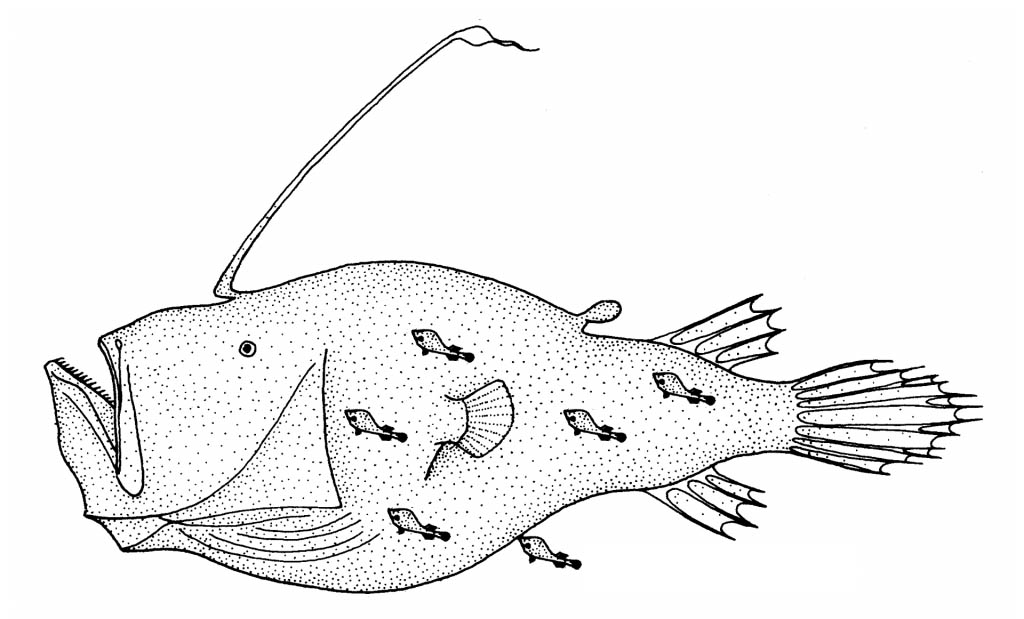
For a typical business, UX design is seen as a specialization. Businesses have many specialized roles they hire for. They fit into a larger strategy for profit and growth decided by people who are in generalized roles. Even if you work on a large team, under a Director of UX, many of the important design decisions you have to work with are likely not made by designers. The budgets, schedules, and requirements come from people who know far less about making great/ethical products than you or your team does, in part because making great products isn’t their goal. Unless someone influences their thinking, that is the way it will stay.
Your faith in UX, as promised in the title of this essay, comes in an unexpected form and it starts here. You must trust that you are good at UX design and that your focus, for a time, must go elsewhere. If most of the big design decisions are made by people who you think are bad at design, or are unethical, you need to broaden what you think design is. The VP, the PM, the engineer, if they’re making decisions that “should be yours” or are “terrible”, then they’re designers too and powerful ones. This means there are only three reasonable choices:
- Move into a role where you make the important decisions.
- Become better at influencing decision makers.
- Find a place to work that has higher standards (or start your own).
Unfortunately the most common choice might be #4: complain and/or do nothing. It’s human nature to prefer the familiar, even if disappointing, to the unknown. It’s a safe choice because many make it. It’s less scary than the alternatives and it’s often immediately rewarded as others will complain with you. They may also tell you #1 is a betrayal. That you won’t be a “designer” anymore, despite how if you do it you’ll be making the decisions you felt you should have been yours all along (as well as paving the way for the next “designer” to have more power). For #2, some will say “Why should I have to?” and the answer is you don’t. You don’t have to do anything. However if you want something to change, participation is required.
The day you were hired you likely knew more about good design than most of your organization, including the executives. Put your faith in your UX knowledge and use it as a foundation to stand on, instead of a weight holding you down. Ignore the standard design books, design conferences and design media for a time. Don’t keep sharpening the sharpest tool you have if it’s clearly not the one you need.
Instead learn about how consultants persuade. Studying business for designers is good, but even better is to immerse yourself in a founder or product management community. Study their arguments and their theories on their turf. Ask questions. Learn to speak their language, so you can be a better translator. Maybe you can do it locally, if there’s someone on “the other side” in your org you get along with well. Ask them to mentor you. Make them an ally. Treat the powerful people you want to influence as if they were your users: you want to study them, charm them, so they can be users of your ideas.
It can seem insurmountable that one individual could ever gain much influence. If the host creature, or organization, is large and powerful, what hope could there ever be to redesign how things work? This is how we must imagine the sad male anglerfish feels as he rides along, playing the same small role for all time. But what he can’t know, that you can, are other stories. What he can’t do, that you can, is make new choices. You are free to change your relationship to your organization, to your work and to yourself.
Consider, for example, the abilities of the emerald wasp. It’s a fraction of the size of the creature it needs to influence (a roach). It’s so small it’s not seen as a threat. It’s underestimated, but it has studied well and perfected its skills. Once it finds the right place and time, in an instant it strikes and lets the design of its persuasive chemistry do the work. Soon it has control of the mind of what once was its superior, pulling it gently along, without even a struggle, to do its bidding. Now imagine if our emerald coated friend wasn’t working alone, but had allies with a shared mission? What might be achievable then? In nature, and design, anything is possible.

(Note: American corporations should be better regulated to act more as members of society, and penalized for profiting from behavior that damages the greater good, but this is a systemic issue beyond the scope of design which is why I didn’t address it directly in this essay. I’ve received constructive feedback on this omission and wanted to address it in some fashion. Added 2-6-2021).
(Minor edit: “being honest about where things are”, 20/2021).
Scott Berkun is the author of How Design Makes The World. You can read a related thread on #designethics on twitter.
Thanks to Bryan Zug and Phillip Hunter for draft feedback.

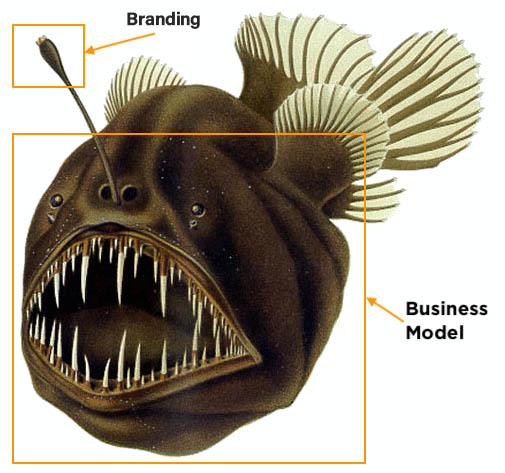
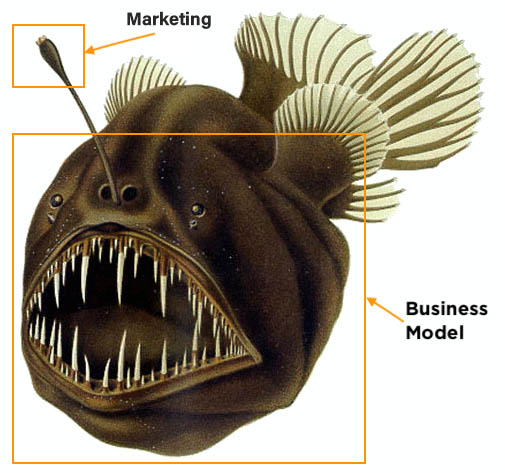
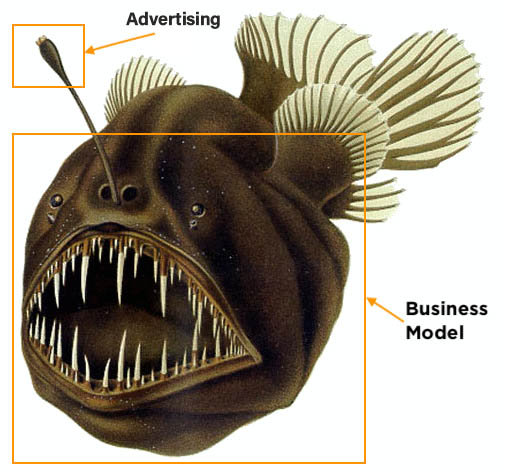
Storytelling to Motivate
Using storytelling to better understand the problems you face, needs and practices to motivate people at work.
Learning by Making
Define meaningful narratives as supported by learning by making to insert meaning into your work cultures.
Shaping healthy Cultures
Do Practice Spotting on stories to record Practices to connect and contextualise in your work to shape healthy cultures.
Perhaps the answer does not exist in design or UX or some like discipline but in the idea that its in the intersections of a number of skills needed to model and remodel the world in consideration of revised incentives that equal a better life for people and planet equally.
The answer is definitely not in design (in the product design sense of the word) or UX, which was central to what I was trying to say. More specifically, corporations and what the are allowed and motivated to do is something that is designed. In different nations the damage they do to the environment is better regulated and/or the culture of that nation is less prone to taking short term gains at the expense of long term loses for future generations. Even in America the value system that has dominated American corporate culture have changed. There was once a time they provided employees with pensions, as that was seen to be part of the standard of being part of society. I don’t think we need to invent some new way of thinking about the relationship between businesses and society but to revisit how we got here and what we’ve lost.
You make a compelling argument with some of your analogies but it’s presumptuous to bemoan nature for not following human morality. Human morality is always a point in time opinion and nature works with or without us.
Same deal on anthropomorphizing the male angler fish. They are surviving and fulfilling their procreative urges. If there were a species with the same setup but they didn’t fulfill their function their timeline was a short one and feelings have no bearing on that.
I think being glib about those facts make the parallels you draw weaker
> it’s presumptuous to bemoan nature for not following human morality.
Not sure where you felt I was bemoaning. I hate to bemoan accidentally. It’s a top complaint for me about the world today – careless bemoaning. I almost bemoan bemoaning.
This early sentence expressed respect for nature, not judgement. We are struggling, not nature. But maybe it landed on you differently.
“We’d call this immoral, or homicidal, if humans did it, but we struggle to rationalize our morality with the natural world we’ve evolved from and are still a part of.”
> Same deal on anthropomorphizing the male angler fish.
Well, if you can increase the number of my anglerfish readers I’d be less likely to do this, but currently most of my readers live on land. It helps in the context of an essay that is not written for National Geographic, to write from a perspective readers can relate to. If I were writing in a different context, say an encyclopedia entry about the species, I might agree with you.
> I think being glib about those facts make the parallels you draw weaker
Glib seems harsh. If you have better parallels I should have worked from, I’d love to hear them. But alas, given that Hurst and Hall both referenced the anglerfish that was the context that made the most sense to work from.
You wrote, “Evolution is about good design for survival and we can learn from its history, even if we don’t agree with its morality.” which is bemoaning in an attempt at levity
I’ll concede glib is too harsh, sorry about that, and knowing that the angler analogy was part of your source helps
However, calling nature/evolution immoral doesn’t land and prompted my comment. I think you’ve got a stronger thesis ending that sentence “… and we can learn from it’s macabre history.” for instance.
“knowing that the angler analogy was part of your source helps”
It’s literally IN the essay!
This actually made me feel a little better about my crappy day/week/month at work, thank you! A reminder that coming up with a plan and doing something is better than complaining and doing nothing. PS I spotted a typo: where you put “destain” I think you meant “disdain”?
Thanks Will. Typo corrected.
Fantastic piece! My area of focus is learning and development… and I swapped in “L&D” in place of “UX Design” as I read. I could see myself and my industry in it.
I have an expansive view Design which seems to align with your positioning. I avoid conversation with “Designers” about it for the reasons you share here. The easy and common choice is option #4 in your essay – and I imagine these same types exist in any discipline. They sure do in L&D.
Hi Ben – Glad you noticed this. Many professions face this challenge and I wrote it with that in mind. Thanks for the comment.
Thank you for this, Scott. I read Hurst’s piece a few days ago and something about it didn’t feel right to me. You put it very clearly: As a community and discipline, we felt like special snowflakes for far too long and that didn’t help us at all. It’s time we see reality as it is, not as we would like it to be.
BTW, “parasitic underwater sex on demand” will be on my head for a while…